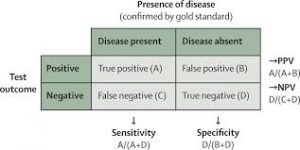Current Evidence in Oral and Pharyngeal Cancer
Partido, B.B.
Cancer is the unregulated proliferation of cells and the spread of those abnormal cells to different parts of the body. These cells continuously divide, invade tissues, and metastasize through the circulatory and lymphatic systems. Oral and pharyngeal cancers (OPC) mainly comprise of malignant neoplasms of epithelial tissues originating from the lips, tonsils, pharynx, alveolar and buccal mucosa, gingiva, palate, tongue, and salivary glands. 90% of all types of oral and pharyngeal cancer is squamous cell carcinoma.
Incidence of Oral and Pharyngeal Cancer

The incidence rates of oral and pharyngeal cancers (OPC) varies by age, time, borders, and demographic group. In general, incidence rates are higher for older adults and younger people; males have higher rates than females; and non-Hispanic white have higher raters than all other ethnic groups. Tobacco use, especially smoking, is the most preventable risk factor for OPCs. Although alcohol consumption alone may not lead to oral and pharyngeal cancer, the synergistic effect of both alcohol consumption and tobacco use may increase the risk for OPC.
Screening for Oral and Pharyngeal Cancer

The primary goal in cancer screening is to detect tumors before they become symptomatic or become clinically visible. Because OPCs are asymptomatic in the early stages, most OPCs are detected at relatively advanced stages. Survival rates increase and morbidity rates decrease when tumors are detected in the early stages. The current goal of the Healthy People 2020 initiative is to increase the proportion of OPCs detected at the early stages.
Considerations for Cancer Screenings
When considering different tools to aid in the detection of OPCs, there are four important concepts to understand about the diagnostic device:
- Sensitivity- The ability to test for the presence of disease. The formula is (TP)/(TP + FN)
- Specificity- The ability to test for the absence of disease. The formula is (TN)/(TN + FP)
- Positive Predictive Value (PPV)- The probability of someone who tests positive for a disease actually has the disease. The formula is TP/(TP + FP).
- Negative Predictive Value- The probability of someone who tests negative for a disease actually do not have the disease. The formula is TN/(TN + FN).

Further resources: